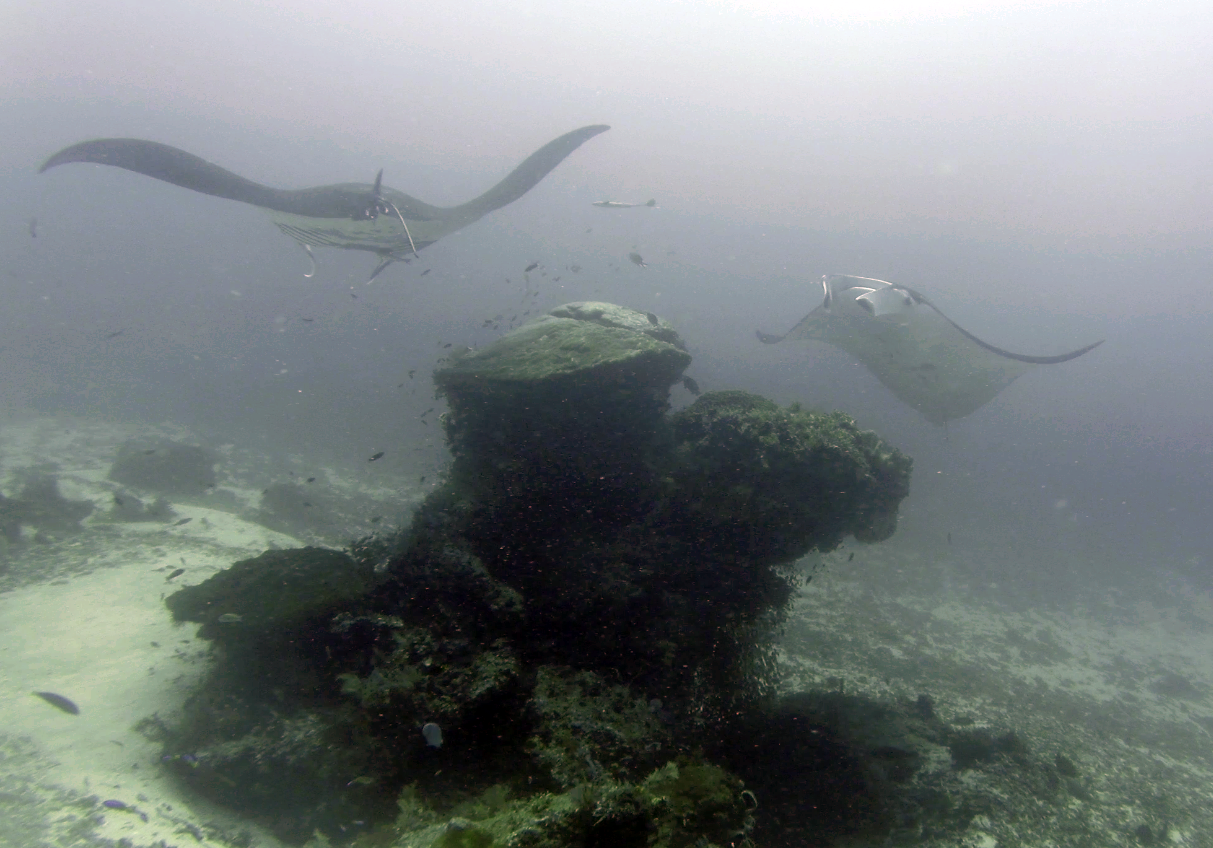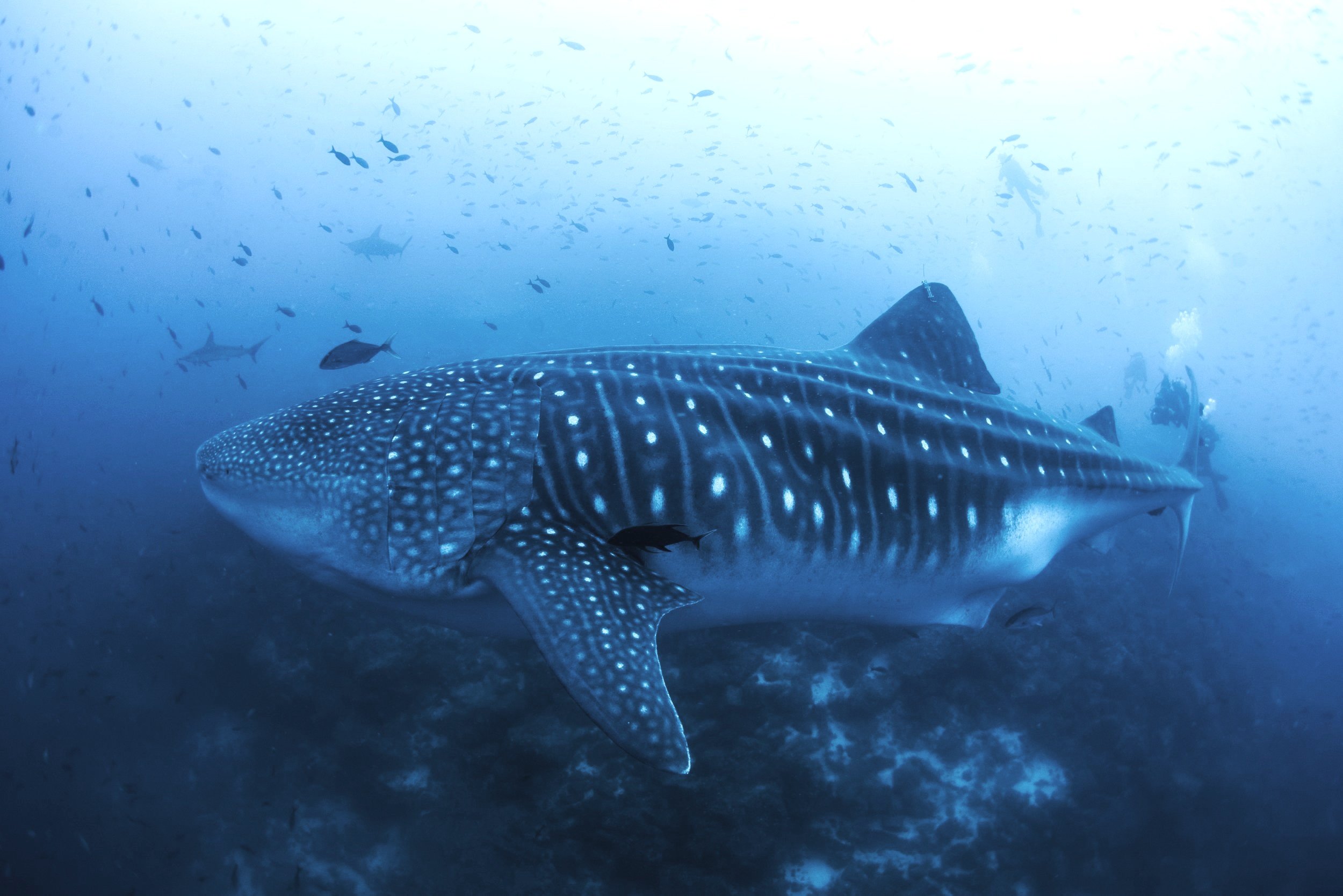Why Do Manta Rays Move Their Cephalic Lobes?
A new study has observed manta rays moving their cephalic lobes in specific and interesting ways during social interactions. The research, by scientists from Marine Megafauna Foundation, Macquarie University, the University of Cape Town, and the University of Papua, provides a new and detailed analysis of manta ray behavior in the wild. Results suggest that cephalic lobe movements may be important in social communication or sensing the local environment, as well as being used in feeding.
Previous work by the research team, who conducted fieldwork in Raja Ampat, West Papua had shown that reef manta rays are social animals, with individuals recognizing and remembering their preferred social partners. Knowledge of how manta rays relate to each other and transfer information within groups is likely to be important to understanding many aspects of their ecology and behavior.
The study, published in Behavioral Ecology and Sociobiology, used observations of manta rays at cleaning stations, where they are cleaned by symbiotic cleaner fish, interact socially, and engage in reproductive behaviors. Researchers recorded all movements made by the paired cephalic lobes on the sides of manta rays’ heads and their exact timing in relation to the context in which they occurred. They describe a variety of specific lobe positions and movements, finding that these were more frequent and sustained during social encounters. Certain movements, such as small flicks of the lobe tips, were performed more frequently when rays were facing another individual, while tight rolling of the lobes was associated with being followed by others. Some lobe movement types were also made more frequently when interacting closely with cleaner fish and may be used to attract the attention of these fish. Other factors, such as streamlining during swimming and the presence of zooplankton were also likely to be important. The researchers observed this wide variety in cephalic lobe movements, displaying that manta rays are more complex than what is currently published, and that significant research is needed to get to the bottom of this mystery. This study pioneered the first manta behavior methodological technique (developed in BORIS software) to analyze manta ray behavior in an unbiased and transferrable way.
Rob Perryman, a Ph.D. student at Macquarie University and the lead author of the study said, “it’s always been very difficult for us to understand communication in other species, particularly those such as manta rays that are so obviously different to us, but it is likely that these animals can communicate in a fairly sophisticated way. Here we provide evidence that suggests that a potential way in which communication may occur in manta rays, by using gestures similar to those known to be important in related shark species. Our results add to the growing evidence that manta rays are fundamentally a social species, which is crucial knowledge for conservation”.
Michelle Carpenter, a Ph.D. student at the University of Cape Town and the lead observer of the study said, “it is a humbling experience to record 100s of hours of manta ray behavior and gain insights into what they might be doing with their cephalic lobes, which seem to have other uses than the traditional view that they are just used in feeding. The one finding that stuck out to me was that they were always moving their cephalic lobes when approaching a stimulus – another manta, a human diver, cleaner fish. This provides an argument that mantas are sensing their local environment with their cephalic lobes. Manta rays are incredibly complex creatures and animal behavior is a tough subject, which makes these things hard to confirm.”
In Indonesia, manta rays have been protected since 2014 but artisanal fishing remains an issue, and there is still little awareness of the threats they face. The team hopes that showing the social nature of manta rays will help broaden support and public enthusiasm for their protection around the world. “Collecting information about manta rays’ social interactions, particularly at sites such as cleaning stations where they regularly come into contact with divers, is important to develop sustainable ecotourism and conservation initiatives that allow mantas to coexist with humans in their natural habitats,” added Perryman. “Furthermore, it adds to their overall perception by humans and demonstrates just how fascinating and complex these animals are.”
This research was supported by Papua Explorers Dive Resort, Raja Ampat SEA Centre, and the University of Papua, and carried out under a RisTek-Dikti permit. The study by Rob Perryman et al, titled ‘Reef manta ray cephalic lobe movements are modulated during social interactions’ is published in the journal Behavioral Ecology and Sociobiology on 13th February 2021, and is available here.
Notes to Editors
For questions about this press release, please contact:
Michelle Carpenter, Marine Megafauna Foundation
Email: michelle.carpenter@marinemegafauna.org
Robert Perryman, Marine Megafauna Foundation
Email: rob.perryman@marinemegafauna.org
The Marine Megafauna Foundation (MMF) was created in 2009 to research, protect, and conserve the populations of threatened marine megafauna around the world. MMF’s headquarters are located in Tofo, Mozambique, where they operate as Associação Megafauna Marinha (AMM). ‘Megafauna’ are large marine species such as sharks, rays, and sea turtles. For further details, please see www.marinemegafauna.org or follow us on Twitter, Facebook, Instagram, and LinkedIn.











